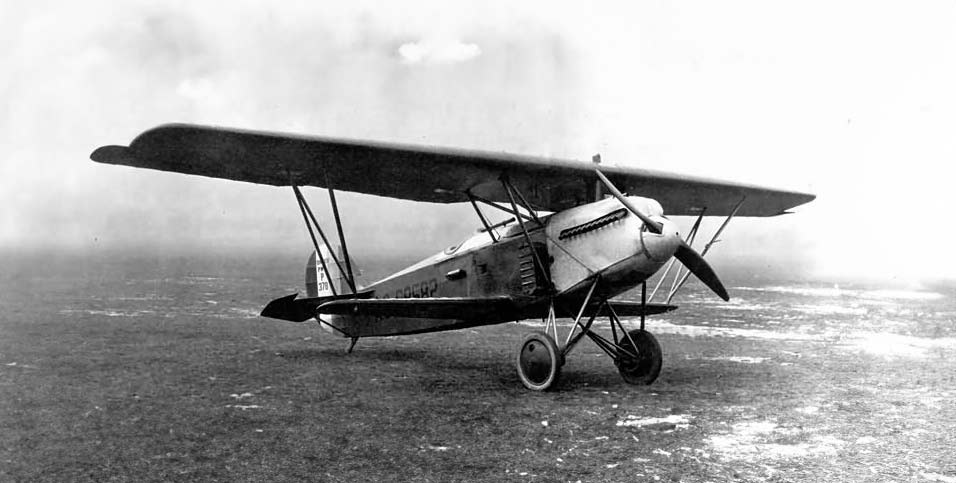The Fokker D.XIII, a 1920s Dutch single-seat biplane fighter, featured a mixed construction and a BMW VI engine, designed for high-speed and maneuverability. This article delves into the Fokker D.XIII, covering its development history, design, performance, and military use. It details the aircraft’s inception during the interwar period, its technical specifications, its combat roles, and its place in the historical context of aviation.
The Fokker D.XIII was a notable aircraft in the annals of military aviation. Developed in the Netherlands, it was a product of the dynamic and rapidly evolving era of military aviation in the early 20th century. This article explores the aircraft’s development, design, performance, and military application.
History of the Development of the Fokker D.XIII:
In the aftermath of World War I, the world of aviation was in a state of rapid transformation. The 1920s marked a period of significant advancements in aircraft technology, with nations keen on developing superior air forces. The Fokker D.XIII was a product of this era, conceived with the aim of providing cutting-edge aerial capabilities.
Developed by the Dutch aircraft manufacturer Fokker, the D.XIII was a response to the growing need for more advanced and capable fighter aircraft. The program was initiated by Anthony Fokker, the company’s founder, who was renowned for his innovative designs during World War I. The development of the Fokker D.XIII began in the early 1920s, with the aircraft taking its first flight in 1924.
The objective was clear: to create a fighter that could outperform contemporary models in speed, agility, and firepower. The era was marked by significant geopolitical shifts and military rearmament, making the development of effective fighters crucial for national defense strategies.
Design of the Fokker D.XIII:
The design of the Fokker D.XIII showcased a blend of innovation and practicality. It was a single-seat biplane with a wingspan of approximately 29 feet (8.84 meters) and a length of 23 feet (7 meters). The aircraft featured a mixed construction, with a fuselage made of welded steel tubes and wings of wood, all covered with fabric.
The D.XIII was powered by a BMW VI engine, capable of producing up to 600 horsepower (447 kW). This powerplant was a significant choice, as it offered high performance and reliability. The aircraft’s design allowed for a top speed of approximately 150 mph (240 km/h), positioning it competitively against its contemporaries.
However, the design was not without drawbacks. The mixed construction, while innovative, resulted in a heavier aircraft compared to all-metal designs emerging at the time. This affected its maneuverability and rate of climb, somewhat limiting its operational ceiling.
Despite these limitations, the Fokker D.XIII brought significant advancements in aerodynamic efficiency and structural integrity, influencing future aircraft designs.

Performance of the Fokker D.XIII:
The performance of the Fokker D.XIII was a balance of power and maneuverability. The BMW VI engine, a 12-cylinder liquid-cooled powerplant, propelled the aircraft to a maximum speed of 150 mph (241 km/h). This engine was known for its robustness and was widely used in various aircraft designs of the era.
In terms of altitude, the D.XIII could reach a service ceiling of approximately 26,000 feet (7,925 meters), a respectable figure for its time. The range of the aircraft was around 342 miles (550 km), enabling it to undertake extended missions.
When compared to its contemporaries, such as the British Bristol Bulldog or the American Curtiss P-1 Hawk, the Fokker D.XIII held its own in terms of speed and power. However, it fell short in areas of agility and climb rate, primarily due to its heavier construction.
Military Use and Combat of the Fokker D.XIII:
The Fokker D.XIII was equipped with two synchronized machine guns, standard armament for fighters of the era. These guns provided it with considerable firepower in aerial combat.
While the D.XIII was designed as a state-of-the-art fighter, its operational use was limited. It did not see extensive combat as it was developed during a relatively peaceful period. However, its design principles and performance characteristics influenced subsequent Fokker aircraft, which were used more extensively in military operations.
The aircraft was not widely exported, and its use remained predominantly within the Netherlands. As military aviation technology rapidly advanced, the Fokker D.XIII was eventually superseded by more modern designs. By the late 1920s and early 1930s, aircraft such as the Fokker D.XXI began to replace older models like the D.XIII.
The Fokker D.XIII stands as a testament to the innovation and development of early 20th-century military aviation. While it may not have seen extensive combat use, its design and performance played a pivotal role in the evolution of fighter aircraft. The D.XIII represents a significant chapter in Fokker’s legacy, showcasing the company’s contribution to the advancement of aerial warfare technology.
Back to the Warbirds section.